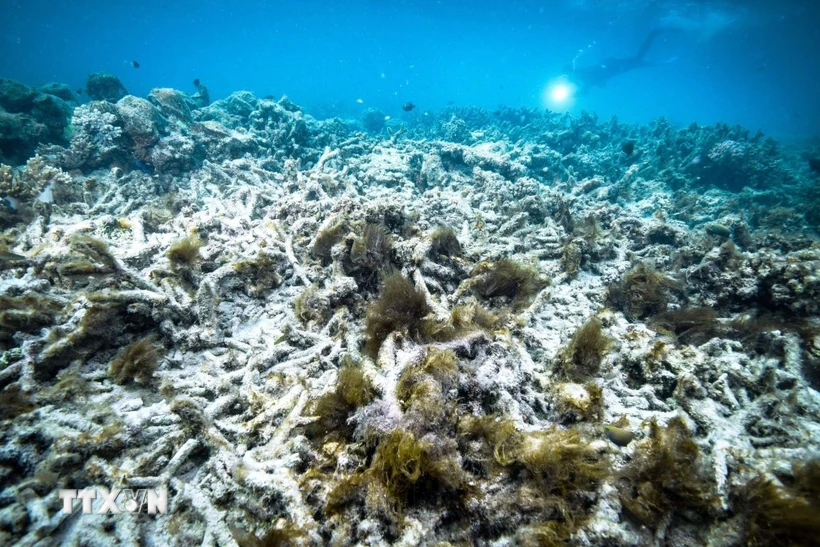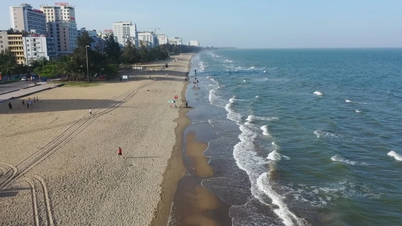Great Barrier Reef in Australia. (Photo: Kyodo/VNA)
Recorded as the largest and most intense bleaching event in history, the event has been ongoing since early 2023 and shows no signs of abating.
Bleaching occurs when rising ocean temperatures cause corals to expel symbiotic algae — their source of color and nutrition — from their bodies, turning them white and becoming vulnerable to death.
According to the US National Oceanic and Atmospheric Administration (NOAA), nearly 84% of coral reefs worldwide have experienced heat stress at levels that could cause bleaching, especially across the Pacific, Indian and Atlantic oceans.
Places like the Caribbean, the Red Sea and Australia's Great Barrier Reef are seeing mass die-offs, with entire ecosystems nearly wiped out.
According to experts, human-caused climate change - especially greenhouse gas emissions from fossil fuel use - is the main cause of large-scale coral bleaching.
2024 is set to be the hottest year on record, with ocean temperatures rising sharply, creating conditions conducive to unprecedented widespread bleaching.
Given the severity of the situation, NOAA has been forced to add three new levels to its coral bleaching alert system to accurately reflect the risk of mass coral deaths in the current period.
Experts warn that if global temperatures rise by 1.5°C – a threshold that could be crossed as early as next decade – between 70 and 90% of coral reefs will disappear. If that figure hits 2°C, virtually all of the world’s coral reefs will no longer exist.
Coral reefs are not only home to millions of marine creatures, but also play a vital role in the survival of hundreds of millions of coastal people, providing food, livelihoods and protection from natural disasters. If the current situation continues, the ecological and economic damage will be immeasurable./.
According to VNA
Source: https://baothanhhoa.vn/hon-80-ran-san-ho-toan-cau-bi-anh-huong-sau-dot-tay-trang-lon-nhat-lich-su-246654.htm






![[Photo] Prime Minister Pham Minh Chinh works with the Standing Committee of Thai Binh Provincial Party Committee](https://vphoto.vietnam.vn/thumb/1200x675/vietnam/resource/IMAGE/2025/5/12/f514ab990c544e05a446f77bba59c7d1)
![[Photo] Prime Minister Pham Minh Chinh receives Swedish Minister of International Development Cooperation and Foreign Trade](https://vphoto.vietnam.vn/thumb/1200x675/vietnam/resource/IMAGE/2025/5/12/ae50d0bb57584fd1bbe1cd77d9ad6d97)
![[Photo] Prime Minister Pham Minh Chinh starts construction of vital highway through Thai Binh and Nam Dinh](https://vphoto.vietnam.vn/thumb/1200x675/vietnam/resource/IMAGE/2025/5/12/52d98584ccea4c8dbf7c7f7484433af5)



















































































Comment (0)